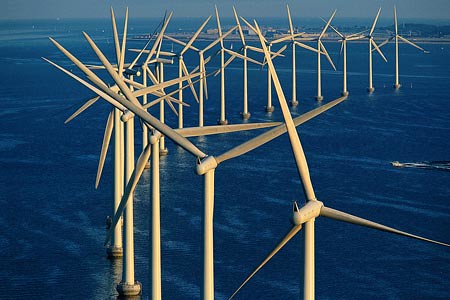In late 2012 I travelled to Denmark for five weeks on a Rotary Foundation Group Study Exchange (GSE). GSE is an opportunity for young professionals to travel to another country, experience the culture and institutions and see how their vocations are practised abroad.
There is no real ‘climate change debate’ in Denmark, as most people simply accept that it is a reality, and one for which they are earnestly planning. In 2008 the capital of Denmark, Copenhagen, embarked upon the ambitious goal of becoming the first city in the world to be carbon neutral by 2025. As a result, Copenhagen is an emerging centre for new green technologies and is cultivating partnerships between government and private enterprise to put them into action.
There are a number of ways in which they are planning to reduce their emissions, including retrofitting existing buildings, increasing the already common use of bicycles and other sustainable transport, increasing production of wind energy, and extending their relatively ‘green’ district heating and cooling systems.
I was fortunate that my vocational visits included getting to experience some of these initiatives first hand.
District Heating
In my first week I met with Jacob Andersen, an advisor with the Centre for Urban Development with the City of Copenhagen. Jacob explained that around 95% of Copenhagen’s heating needs are powered by district heating. Copenhagen’s system involves a small number of large plants such as Vestforbrænding creating either steam or heated water which are passed through underground pipes and converted to household heating systems. I visited one of the waste incineration plants that provides a large proportion of the heat for the district heating system; it was one of many opportunities to don a hard hat on this trip!
Wind Turbines
Denmark has established wind turbine cooperatives, whereby families who buy shares (and therefore generate their own electricity) receive tax exemptions. In Samsø, around 4000 private citizens have erected over 20 community-owned wind turbines in urban areas. In addition, the government is focusing on off-shore wind farms. Some of these, in cooperation between the City of Copenhagen and private shareholders, are just 2km off the coast and can be seen from the city centre, including atop the historic Rundetaarn. Denmark is a leading exporter of wind technology; in fact Vestas recently won a contract to supply turbines in North West Tasmania.
Cycling Superhighways and Sustainable Transport
The City of Copenhagen has been so successful at encouraging people to ride on cycle paths that many are now affected by bicycle traffic congestion. This has led to the planning of 26 ‘cycling superhighways’ designed purely for higher speed cycling into the city centre from the suburbs (at least 5km out). There will be few stops along the way, air pump stations at various intervals, and traffic lights will be adjusted for cyclists (rather than cars) so that users encounter as many green lights as possible. I visited one of these construction sites with civil engineer Peter Hansen of Pihl Industries, who are building the superhighway between the outer suburbs and the central port area of Nyhavn. At that stage they were constructing a bridge across the canal which would be dedicated to cyclists.
Not only is Copenhagen working to increase cycling, but they also have a pedestrian strategy (“More People to Walk More”); something not very common in Australia! They aim to increase pedestrian activity 20% by 2015 and are also planning to introduce hybrid buses to broaden the range of sustainable transport options in the city. In addition to traffic flows, pedestrianisation has broader planning implications. For example, greater foot traffic means that cityscapes, signage and amenities must be designed at a “human scale.”
Copenhagen is proudly promoting itself as a “test bed for green solutions” and wants to be seen as an international leader. Whilst previous planning initiatives in Denmark may have made some of the current solutions easier (such as the early installation of cycle paths, pedestrian-only streets, and district heating infrastructure), Copenhagen is certainly also taking new risks and making substantial changes in order to reduce greenhouse gas emissions. Australia could no doubt learn some important lessons from Denmark, not least that climate change and adaption to it presents an opportunity for innovation and leadership if we choose.



No comments:
Post a Comment